Cooking on an open fire and in a copper kettle? In Val Rovana in Ticino, guests can experience how consciously doing without electricity becomes a real benefit. It’s like stepping back in time when you move into the 17th-century townhouse. The house stood empty for a whopping 100 years, was renovated for more than 10 years, and now meets 19th-century living standards – albeit before electrification. This was not an oversight, but a conscious decision by the owners.
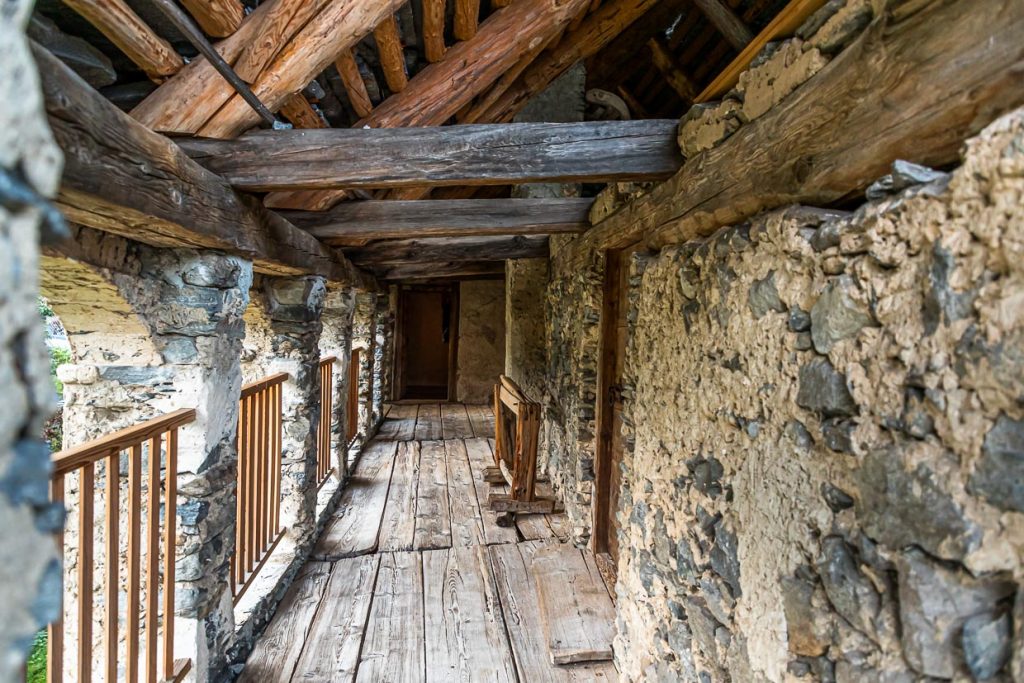
The house has been standing in the small village of Cerentino since 1600. Few parking spaces are located in a bend in the road. The road winds up to Bosco Gurin, another attraction in Val Rovana. The old townhouse was abandoned by its inhabitants around 1900. For more than 100 years it lay in a slumber, which was not a beauty sleep, but which gnawed heavily at the substance. It was kissed awake by the current owners Svetlana and Adriano Betroggi shortly before total decay. In 2007, they began to save the house. Floors, balconies, windows, the roof, almost everything had to be renewed. Restoration was done with historical material. Old woods were used, the house got again a stone roof typical for the region. Even the mortar that holds everything together was baked according to historical methods and gives the house the desired old look.
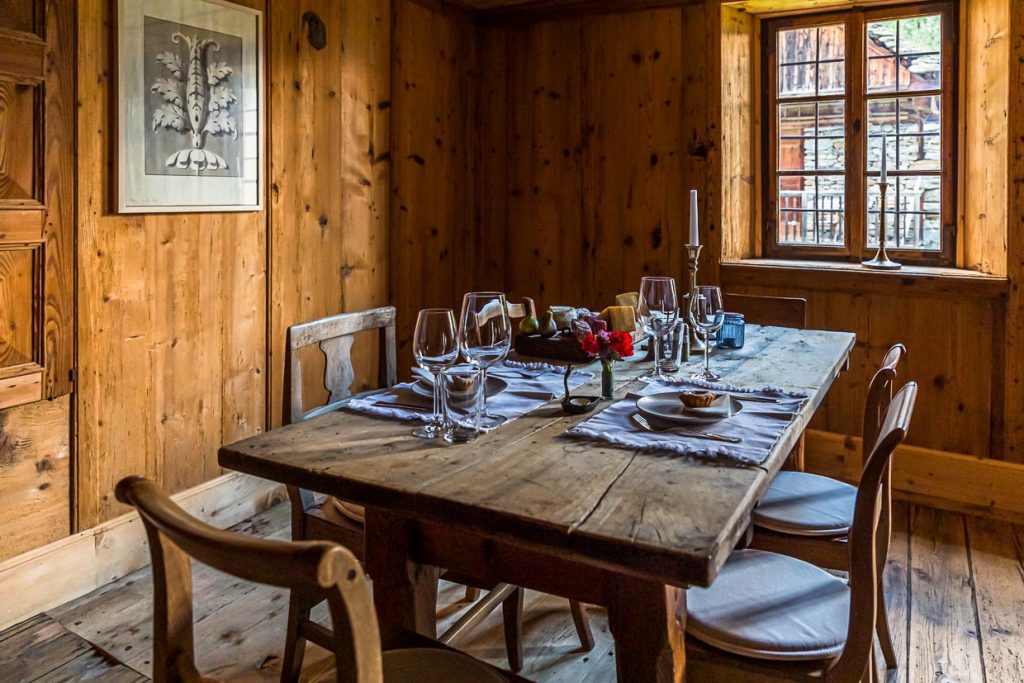
Better than Virtual Reality
At Ca Vegia, you don’t need VR goggles to immerse yourself in another world. Wood-burning stoves, fireplaces and copper kettles provide the illusory stimuli. Supplies are stored in a cold room in the basement and water is available at the stone basin in front of the house. The front door is closed with a thick wrought-iron bolt. The light in the evening is given by candles. In the kitchen, parlor and the four bedrooms there is furniture from the 19th century. The small bathroom upstairs is made of wood and stone. The only new features are a toilet and hot water for the shower. A luxury that you quickly learn to appreciate, because stoking the stoves and supervising the burning candles are time travel enough for the first night at Ca Vegia.
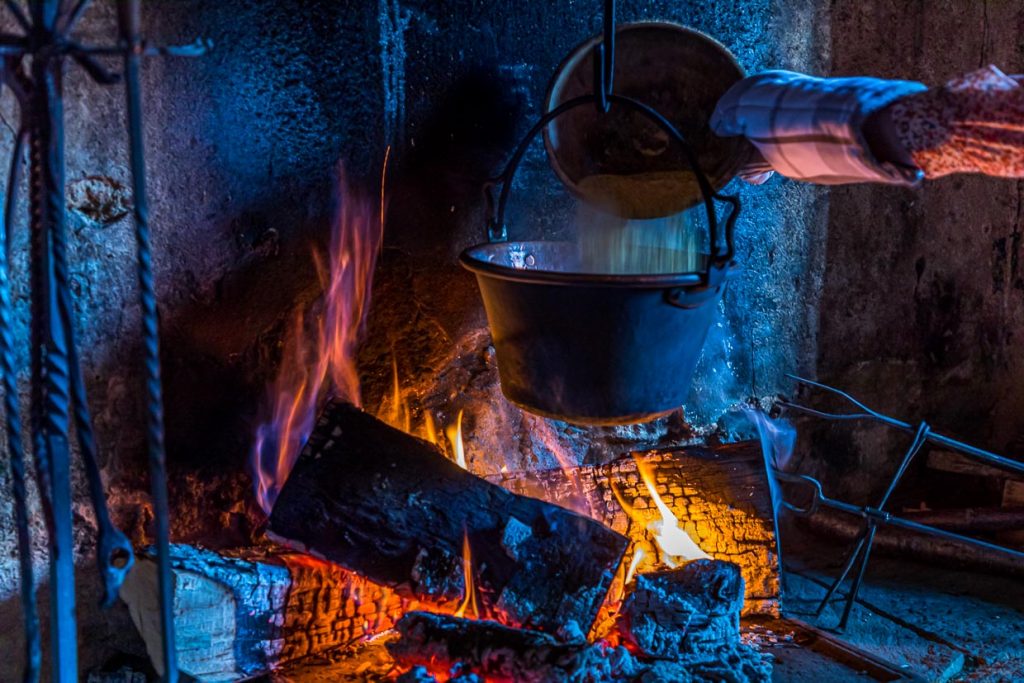
Cooking with local products
Stockpiling always plays an important role in kitchen management. But instead of a refrigerator, Ca Vegia has a wall cabinet and a cellar room. Cooling in the summer is thus finite and the purchases to be chosen wisely. Before going up to the Val Rovana we stop in Cevio. In the Negozio Val Maggia there are only local products to buy. Cheese from Bosco Gurin, game salami from the hunter in Cevio, figs and tomatoes from the local gardens, bread from the local bakery, and wine and beer from the Maggia Valley. I choose polenta flour from Ticino as the filling component of the coming meals from a copper kettle.
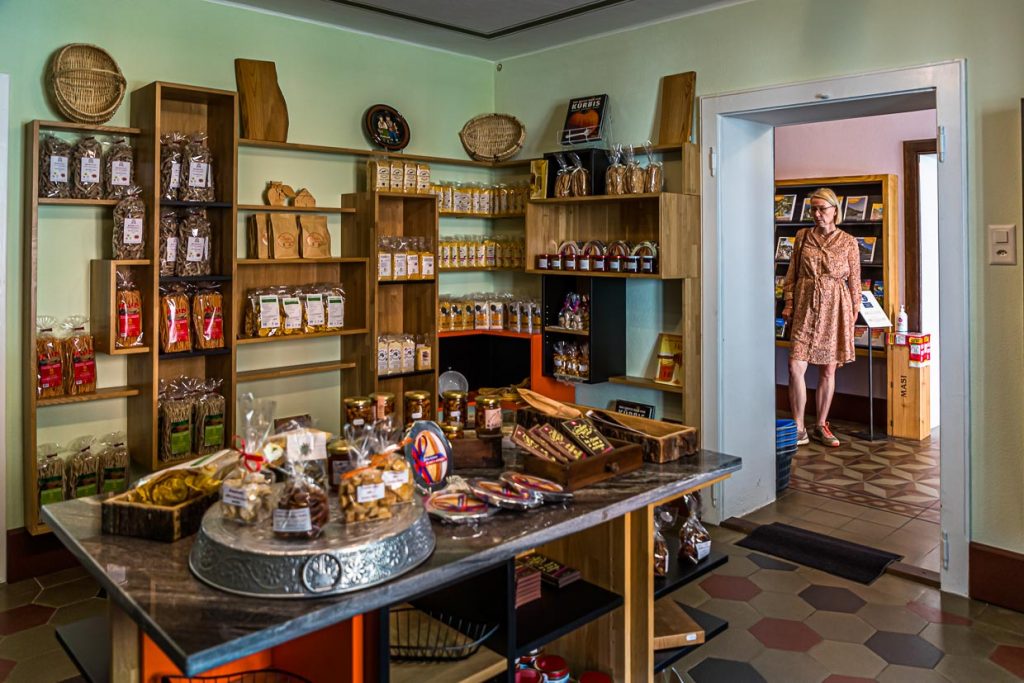
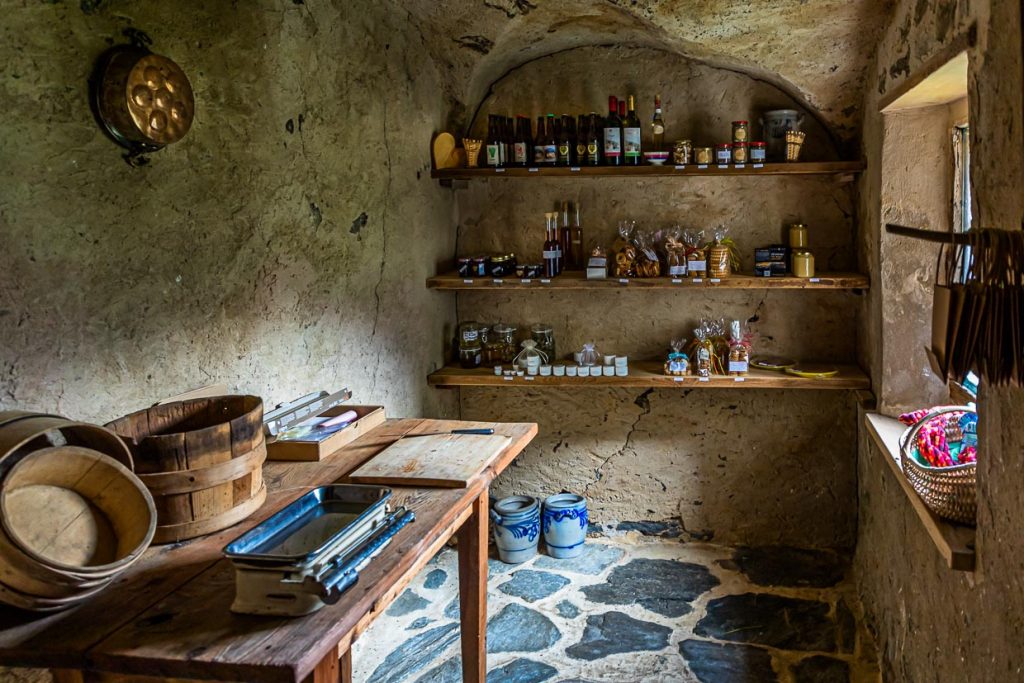
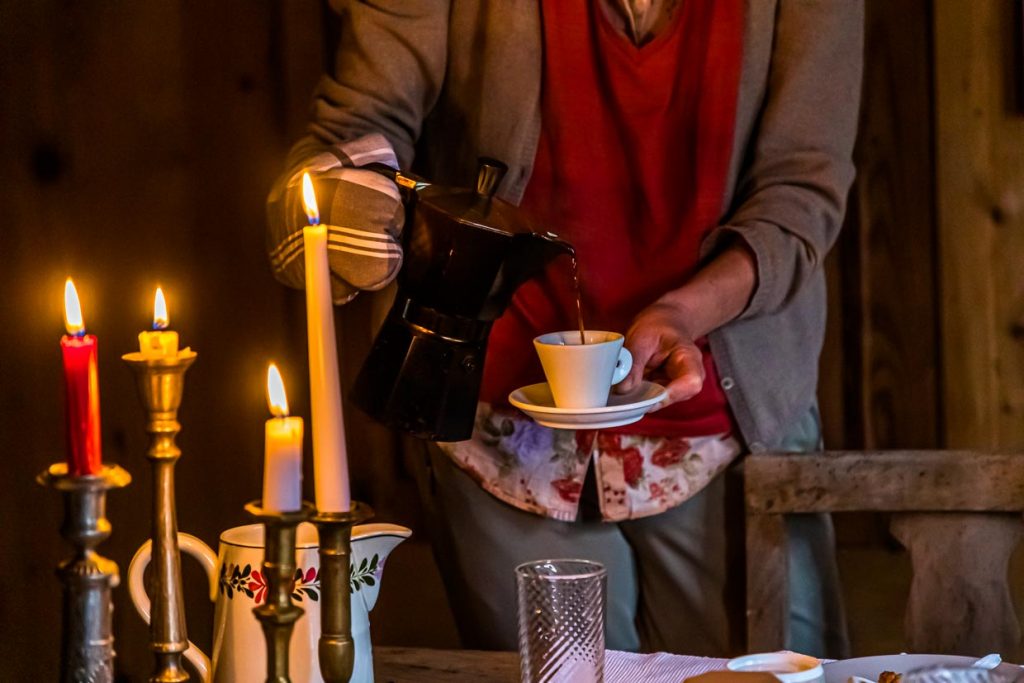
Adagio for espresso – everything takes time
At Ca Vegia, you quickly learn to focus on the basics. Before starting the little journey through time, Svetlana Betroggi, who also speaks German, always gives her guests an introduction. After the lively tour through all the rooms and a small aperitif, we are suddenly alone in the big old house. Digital Detox sets in without you noticing it. Instead of simply flipping a switch, one should always carry a box of matches here. It’s advisable to put fresh candlesticks in daylight and get another pitcher of fresh water from outside. Where do I cool my drinks and how long will it take to get a small fire going to make the espresso in the morning? It sounds tedious, but it’s wonderfully restful. I constantly want to run to the wide balcony at the head of the house and enjoy the magnificent view of the valley and the silence.
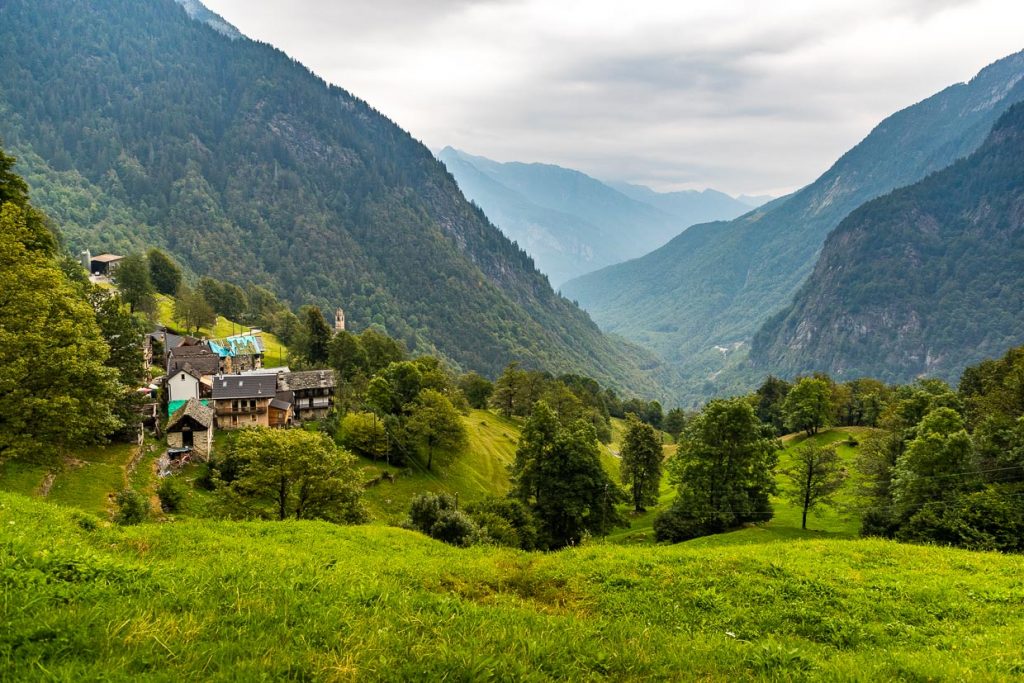
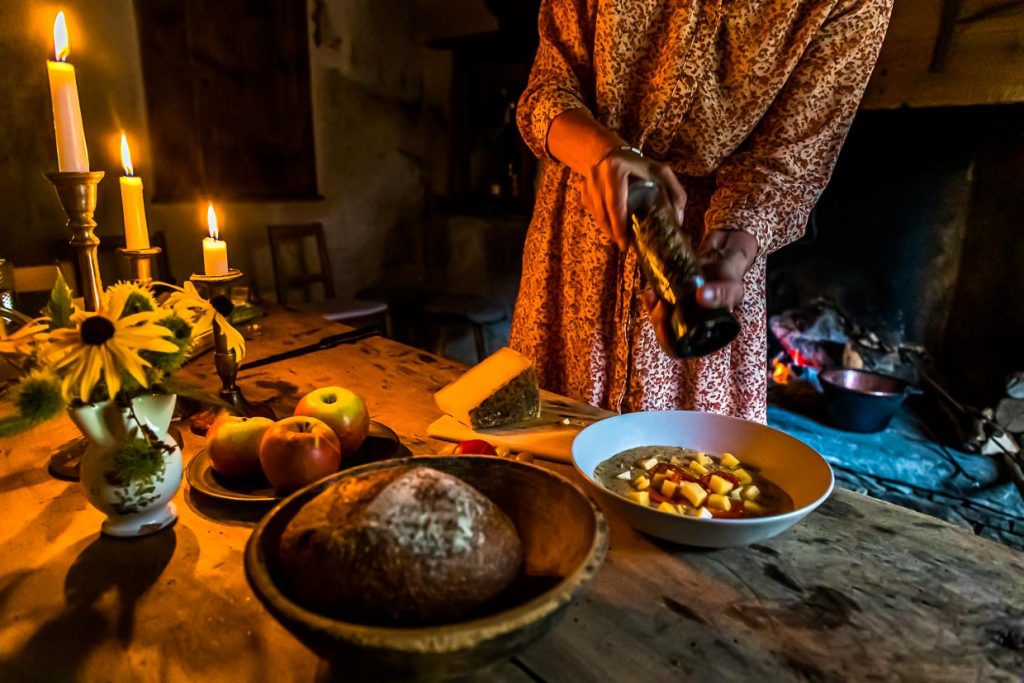
I inspect the kitchen utensils and familiarize myself with the iron chain used to hang the copper kettle over the fire. Thick gloves and a very long wooden spatula for stirring are provided. The most important spices are in the closet and there is also olive oil. In the garden I find thyme and mint. Nothing should stand in the way of preparing polenta. Firewood is right at the entrance in the long corridor of the house. I carry matches with me since I once ran out of candle in the storage cellar and had to find my way back to the parlor in the pitch dark. Cooking over the open fireplace works surprisingly well. I put the pot near the embers later to keep warm. Together with the purchases from the small store in the valley, I get a downright festive table set. The light of the many candles adds to the beautiful atmosphere.
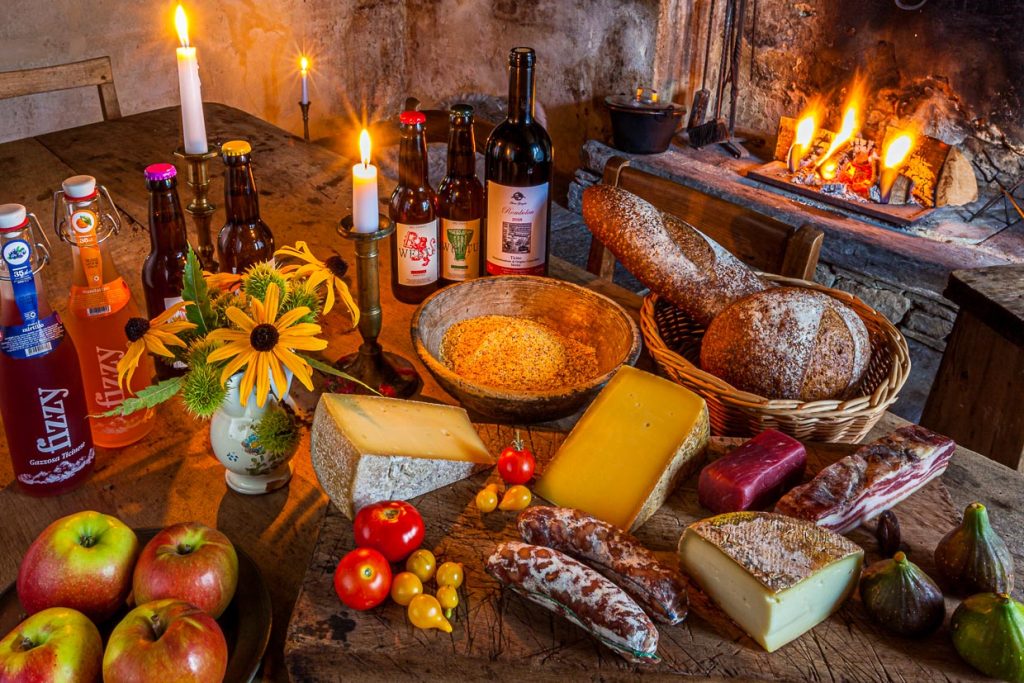
At night, only the stars twinkle here and the air is cold and clear. In the morning you are awakened by the chirping of birds. Several hiking trails start right in Cerentino. It’s a wonderful travel experience where not having electricity is a real benefit. After a restful breakfast, we push the heavy iron bar to the front door and set off for Bosco Gurin, one of the most beautiful alpine villages in Ticino.
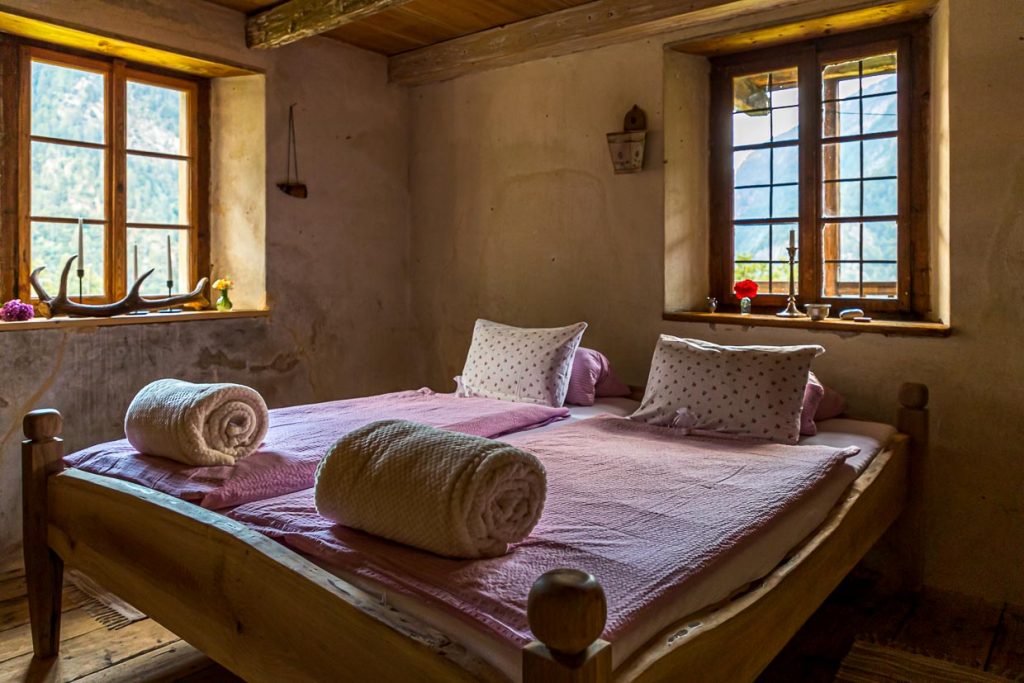
The Walser village of Bosco Gurin
Bosco Gurin is nestled in a picturesque Alpine landscape at an altitude of 1,500 meters. It is the highest year-round inhabited village in Italian-speaking Switzerland. Bosco Gurin is a German language island in the middle of Ticino, because its inhabitants are descendants of the Walsers who moved from Valais over 700 years ago. They have preserved the old Alemannic dialect, the Guryner Ditsch. In one of the oldest houses of the village, dating back to 1386, the Guriner Walser Museum displays the typical utensils that no household could do without centuries ago.
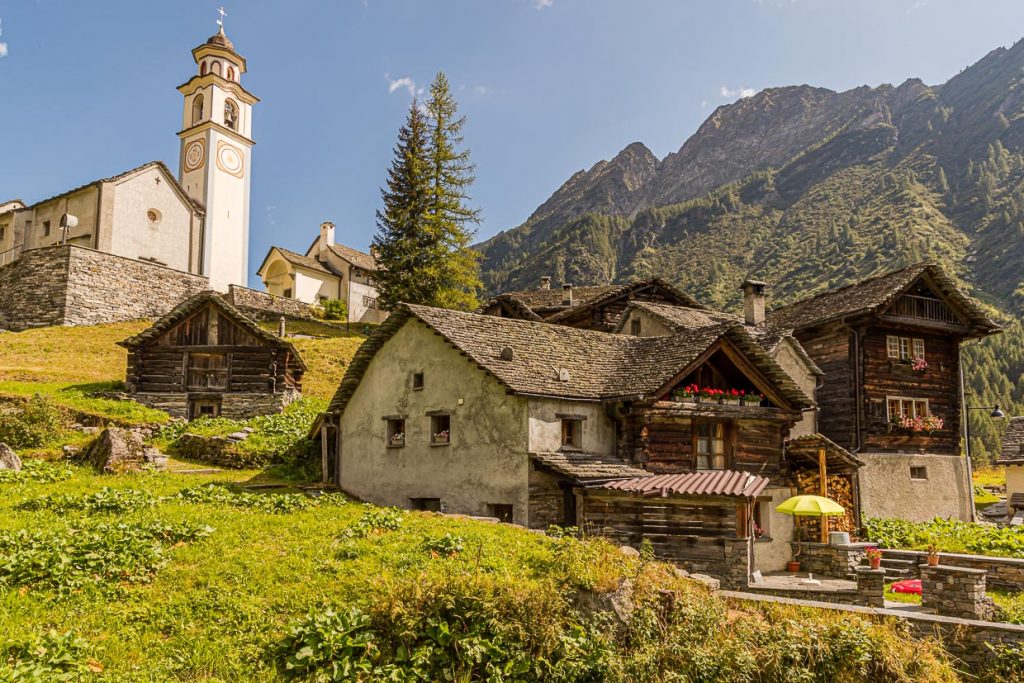
Travel tips
Ca Vegia accommodation (enter Ca Vegia in search)
The Walser Museum in Bosco Gurin
Bosco Gurin, hiking and skiing
Print publication
The research trip was supported on site by the Swiss Tourism Association

